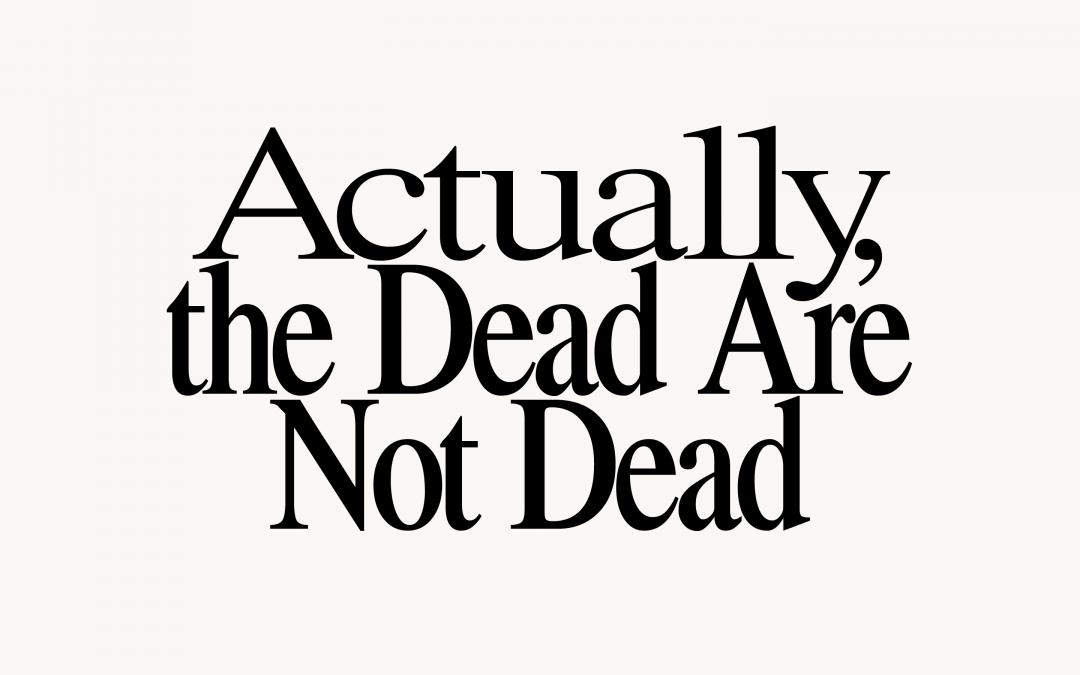Bergen Assembly 2019
Bergen Assembly is an international art event taking place every three years in Bergen. Parts of this year's main exhibition is presented at KODE 1.
This edition of the triennal, titled Actually, the Dead Are Not Dead, is conceived by a core group of twelve curators, artists, theorists and activists.
Actually, the Dead Are Not Dead is based on a collective curatorial process. Presented in five locations, the exhibition is conceived as an open sequence of constellations. It includes works by approximately 60 artists and contributors including various new productions. The strands and constellations revolve around forms of life that resist both present normative models of life as well as the prevailing politics of death.
Exhibitions at KODE 1:
Salon
This part of the exhibition begins with the dissolution of one of the institutions par excellence that controls and is haunted by the past: the museum. The invention of the modern museum in the late-18th and early-19th centuries, in parallel with the peak of colonialism, was part of the nation-building processes in Europe and their construction of identity and the ‘other’. The scientific discourses on race, genetic purity and superiority, of worthy and unworthy life, are interwoven with this institution. They are contrasted here with drafts of life that undermine eugenic forms of selection.
Aspects of care and preservation are treated in diverse and divergent ways: from the historical and current struggles of indigenous peoples to preserve their ecological, territorial and economic bases of life to alternative projects for cultivating plants; from initiatives to eliminate deadly working conditions to the celebratory funeral for an activist collective; from the unfathomable love for a ‘monster’ to the critical questioning of the emotional work of women in moments of crisis. And there is Mercury, the patron of merchants and thieves, who guards the production of a currency that even today remains profoundly interwoven with the history of colonialism. The selective distribution and perception of news by the mass media becomes tangible using the example of newspapers. The model of the moratorium appears as an alternative to hegemonic models of political participation.
Artists: Lorenza Böttner, Simnikiwe Buhlungu / Malebona Maphutse (former Title In Transgression members) feat. the Community, Capital Drawing Group, Banu Cennetoğlu, Laressa Dickey / Magdalena Freudenschuss, Ines Doujak, Niklas Goldbach, Minna Henriksson, Niillas Holmberg / Jenni Laiti / Outi Pieski, Alexander Kluge, Darcy Lange / Maria Snijders, Åsa Sonjasdotter, Nina Støttrup Larsen, Emma Wolukau-Wanambwa and Workers’ Families Seeking Justice (WFSJ) and its Support Group.
political parties
— Curatorial Contribution by María García and Pedro G. Romero
When Bergen Assembly invited us to rethink the idea of what an assembly can be, our research focused on Asamblea general (General Assembly), an early 19th-century text by Serafín Estébanez Calderón, which was an intimation of what flamenco would become. The text, whose illustrations are influenced by Francisco de Goya, is an account of a feast, a description of a festive celebration of what was actually a kris: a Roma assembly, court or forum of the Andalusian Roma of Cádiz, Málaga and Seville, who gathered to resolve disputes, demarcate areas of influence, establish family ties, get to know each other and reinforce self-government.
From there we embarked on an archaeology of that joint understanding of party and political assembly, exploring fields such as bohemia, the avant-garde and the counterculture, right up to the immediate present. It should be understood that we are not talking about a dialectical pair, but rather a ‘gay politics’, which in its pathos makes no distinction between f estive forms and the forms of politics. As the artist Allan Sekula said in reference to its colleague Darcy Lange’s work: ‘it was not about a party to celebrate a political decision, but about the fact that the party is the community’s only possible political space, where it finds and recognises itself ’.
Artists: Gerd Arntz / August Sander / Franz Wilhelm Seiwert, Pepín Bello / Luis Buñuel / Salvador Dalí / Federico García Lorca, Serafín Estébanez Calderón / Francisco Lameyer, Toto Estirado / Gonzalo García-Pelayo, Flo6X8, Israel Galván, Tony Gatlif, Helios Gómez, Francisco de Goya, Julio Jara, Teresa Lanceta, Darcy Lange / Maria Snijders, Ocaña y sus muchachas flamencas, PEROU / Sébastien Thiéry, Carlos González Ragel (Rajel), Charles Roka / Situationist International / Raisa ‘Raya’ Bielenberg and Tore-Jarl Bielenberg / Gypsy Legacy, Pedro G. Romero, SEM/EN, Stalker/Osservatorio Nomade / Fabrizio Boni / Giorgio de Finis, Ceija Stojka, Pedro G. Romero, Teatro Gitano Andaluz de Mario Maya, Mónica Valenciano, Rosario Weiss
Bergen Assembly 2019 continues at: Entrée, Hordaland kunstsenter, Bergen Kjøtt, Belgin, Bergen Kunsthall, Folk og Røvere.
- 5 Sep 2019 to 10 Nov 2019
- 0 *
* Free entrance at Bergen Assembly

